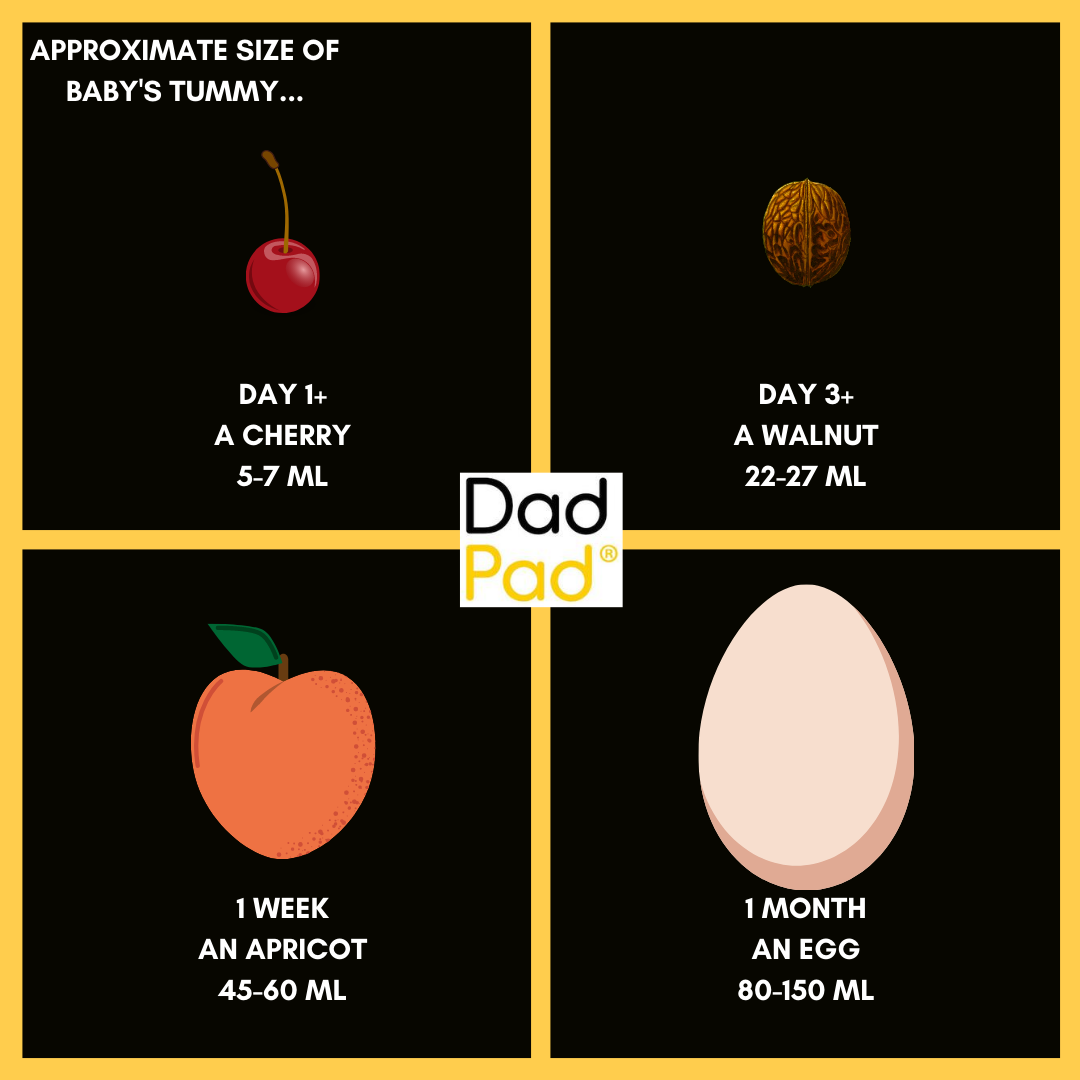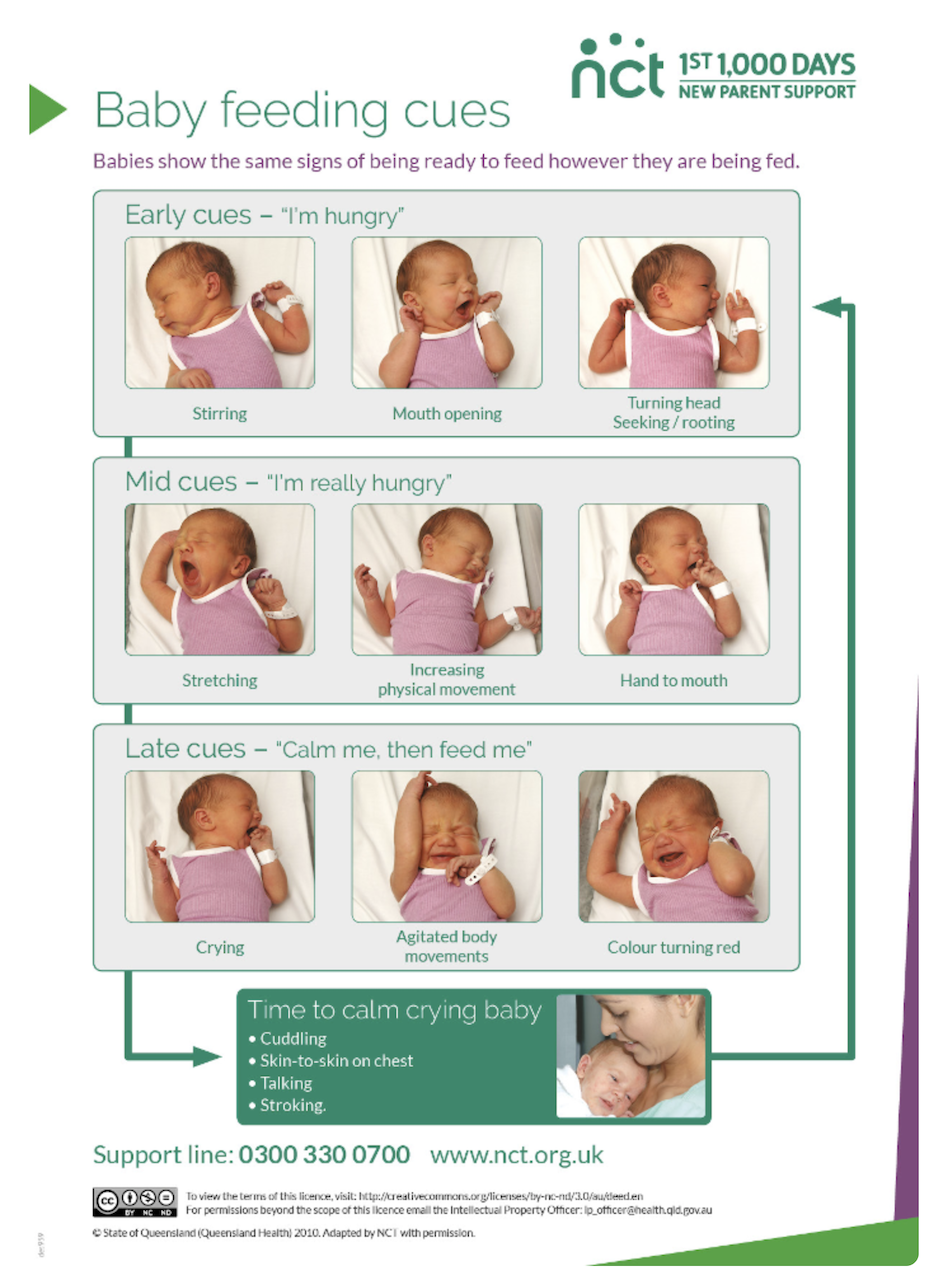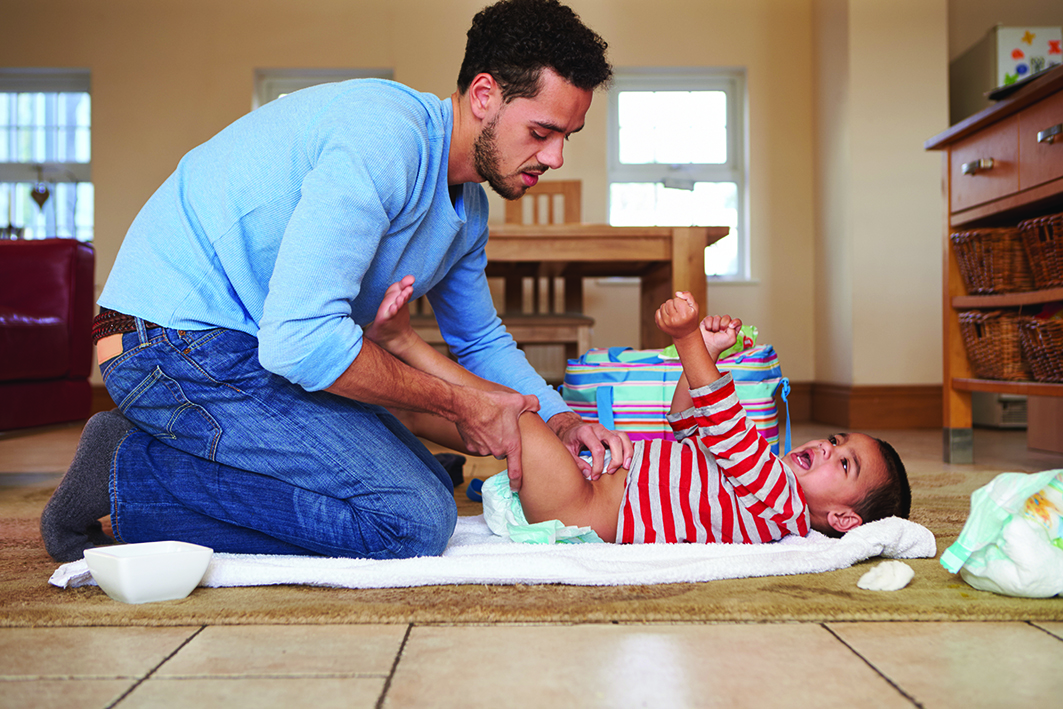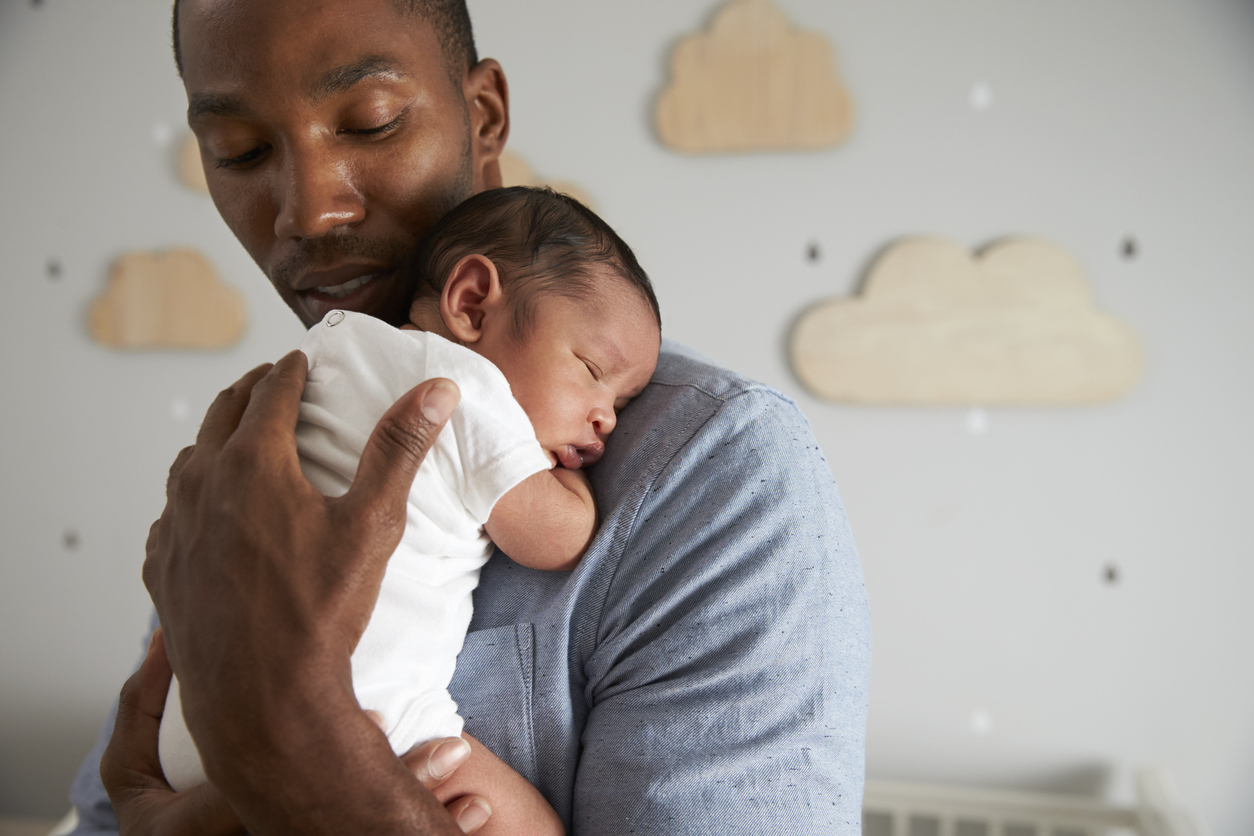
Ask DadPad, Crying, Parenting Advice
Ask DadPad: Why does my baby cry?
Posted on 17th July 2023
Perhaps one of the hardest things when caring for your new baby is learning to cope with their crying. Remember, though, that all babies usually cry for a reason – it’s their way of communicating, and a pretty successful way of getting your attention!
Understanding, and coping with, your baby’s crying is something we’ve always included within our DadPad and Co-ParentPad resources, because it is such an important topic. Also, because experiencing baby’s crying can often lead to a whole range of emotions in new parents – including: frustration, that they won’t stop; overwhelmed, with the feeling that this noise might never stop; stress, that you can’t seem to soothe them; and/or exhaustion, especially when they’re crying at night and all you want to do is sleep – we’ve already written a separate blog post which specifically considers How do I cope with my baby’s crying?. This post is definitely worth a read if that aspect of new parenthood is a concern for you, but in today’s post we’re going to focus in on trying to gain a better understanding of some of the reasons why your baby might be crying, and what you can do to try and help them.
Reasons why babies cry
Given that crying is your baby’s way of communicating with you, it’s helpful to first start by thinking what – as a baby – they might be trying to tell you. Babies’ needs are relatively simple, so it’s a good idea to start with this checklist to see if there is anything that they’re asking of you…
I’m hungry
No matter when baby last fed, they might still be hungry. This is because of a number of reasons, including that baby’s stomachs are quite small, and they can therefore only take in small amounts of food at a time.

DadPad graphic giving an approximation of baby’s stomach size
Also, all babies will undergo growth spurts, which mean that there may be days when they seem desperate for food and never satisfied with what you or your partner are offering them. Don’t also forget that – especially when newborn – babies may also want to breastfeed in order to experience that close connection to their mum’s body.
Whatever the reason might be, though, there are a number of signs – as well as their cry – that you can look out for in baby, known as feeding cues, that they are wanting food. Again, these are your baby’s ways of communicating with you, and they’re something that we, as parents, should look out for so that we are better able to understand and respond to our baby’s needs. The most common sleep cues include:
- Stirring
- Turning their head from side-to-side – sometimes called ‘rooting’
- Poking out their tongue
- Making grumbles or squeaking noises
- Smacking their lips
- Opening their mouth
This graphic from the NCT is helpful when you’re learning to recognise these in your new baby, including the fact that the cues will differ as baby gets more and more distressed/desperate for food:

Graphic from NCT website [link]
I’m tired
New babies – especially in the first three months following birth (the ‘fourth trimester’), when they gently adjust to life outside the womb – have quite different sleep patterns to everyone else. Although they will wake frequently, taking their sleep in short bursts, as a newborn they will need somewhere between 16-18 hours sleep a day. Although this will change as they grow, gradually settling into the more traditional ‘awake during the day, asleep at night’ pattern, little ones will need more sleep than adults, as their bodies are so busy growing and adapting. For example, the NHS tell us that babies will usually “gain weight most rapidly in the first 6 to 9 months”, and when you consider that, by the age of two, “children have reached about half of their adult height and 90% of adult head size” (so there’s a huge amount of brain growth and development going on in there, too), you can see why they need so much sleep!
Just like hunger, there are a number of signals or cues that your baby will be sending out to you when they are tired, and again it’s helpful for parents to have an awareness of them, so that they can look out for them. Some common signals that baby is tired include:
- Rubbing their eyes or pulling at their ears
- Clenching their fists
- Frequently yawning and stretching
- Losing interest in what they’re doing, which might include turning their face away from those around them, starting blankly into space, going very quiet and still, or becoming ‘fussy’
- Burying their face into the chest of the person holding them
They might also sometimes feel overwhelmed, perhaps as a result of too much stimulation, and need a bit of quiet time.
If you think your baby is ready for a nap, then lie them down in their safe sleep space (there’s more information on this in our How do I keep my baby safe while they sleep? blog) so that they can rest. If they’re having difficulty settling – which might happen if you’re ‘missed’ their cues, and they’ve become over-tired and are crying – then you might want to try some methods to comfort them (see below) or baby even take them for a drive in the car.
I need my nappy changing
Whilst modern disposable nappies do a great job of keeping wee away from baby’s skin, if they’ve done a poo, or if they’ve not been changed for a while, their soiled nappy might be becoming uncomfortable for them. One of the best ways to check this is, of course, to have a quick sniff of their bum – it’s something all parents have done! You can also get a good idea of whether a nappy, cloth or disposable, needs changing by gauging the weight of it.
Obviously, for some babies, the ‘trauma’ of having their clothes and nappy removed etc can also cause upset, so do be ready for this. Nappy changing definitely gets easier with practice, and it’s always a good idea to be prepared, with all the items you’ll need stored together and easily to hand. We’ve got information on nappy changing in our DadPad resources and also within our How do I care for my baby? blog post.

I’m not feeling well
There’s all sorts of reasons why your baby might be feeling a bit ‘off’ – they might be experiencing the pain of teething, have a tummy ache or discomfort from wind, or they might be coming down with something, such as an earache or a cold.
You and baby’s mum might already have an idea of what is wrong with baby, and it might be that they just need an extra bit of comfort and love to ease them through their discomfort, or some gentle help with what’s troubling them. For example, if they need winding after feeding, you could try gently rubbing their back, or – if it’s a pain in their tummy that’s causing the problem – you could lie them down and gently rub their tummy.
However, if either of you are concerned, do get medical help – remember, you know your baby better than anyone else and you should never be afraid of wasting anyone’s time in getting your baby checked out. Your doctor, midwife or health visitor will be more than happy to reassure you if there’s nothing wrong – but will also be able to get the appropriate help for baby if needed.
Remember also that you can get NHS advice at any time of the day or night by calling 111 and, if you ever feel that your baby needs urgent care or is in imminent danger, always call 999. It’s especially important to seek urgent medical attention if your baby’s cry is different to normal – such as being very weak or high-pitched – and/or if you or baby’s mum have noticed other unusual symptoms in your baby. You can find out more information on how to tell if your baby is really poorly via this NHS page.
There’s also the HANDi app which you can download onto your phone or tablet. Developed by the paediatric (baby and child care specialists) team at Musgrove Park Hospital, it provides expert support to parents, carers and medical professionals on caring for children with common childhood illnesses, such as upset tummies, high temperatures, tummy pains, wheeziness and other chest complaints, and other common newborn problems. You can find out more and download the app by searching for ‘Handi Paediatric’ in your app store.
I’m scared or unsettled
Babies might also cry if they’ve been startled – such as by a sudden or unusual noise.
Don’t forget also that baby might pick up on you or baby’s mum feeling agitated, distressed or unsettled, and this might in turn upset them. If that’s the case, take some time to calm down, ensuring baby is safe first – placing them in their safe sleep space for a few minutes whilst you do this is the best plan.

I need a cuddle
And, just like all of us, sometimes babies just need to feel safe and comforted in the loving arms of their parents. Never be afraid to do this if you think it’s what baby needs – and, despite what you might have been told, you cannot ‘spoil’ a newborn baby. Remember that, especially in the first three months, baby is working hard to adjust to the new, and totally different, surroundings that they’ve suddenly found themselves in, having previously only known 100% connection to another human. It’s therefore no surprise that they’re going to continue to crave that close sensation of being continuously held and touched, and to be able to hear the heartbeat of another human…
The crying curve
You’ll hopefully find – especially as you spend more time with your baby, watching them, interacting with them, and getting to know their individual personality – that you gradually become better able to understand your baby, the signals and cues that they are sending to you to communicate their needs, which will all help you learn how to ease their crying. You’ll also master the best ways to soothe them when they are upset – it all takes practice, and it can sometimes feel hopeless, but you will get there!
However, on some occasions, no matter how hard you try, you might feel as though nothing is helping, and this might be due to something called the ‘crying curve’, because – at certain stages in their early life – babies will cry a lot, and often there’s no reason for this. Not many people know about this, but Dr Suzanne Smith explained it when we spoke with her back in 2020:
Research shows that all babies start to cry more from 2 weeks. It reaches a peak at 6-8 weeks and starts to gradually reduce. There may be a reason for the crying… [but sometimes] the baby cries for no apparent reason and it can be really frustrating and upsetting for parents who think they are doing something wrong… Knowing about [this normal peak of crying] helps parents cope with it because they know it might not be anything they are doing wrong and they know it will pass.
Image from ICON, showing the Infant Crying Curve [link]
Taken from: Barr RG. The normal crying curve: what do we really know? Developmental Medicine and Child Neurology 1990;32(4):356-362.
This stage is also sometimes called the ‘period of PURPLE crying’, with the word ‘purple’ being used as an acronym rather than a description of the colour that babies turn when crying. It stands for:
- Peak of crying – your baby may cry more each week, with the peak usually being in their second month, before becoming less as they move through months 3-5
- Unexpected – the crying often comes and goes without the parents understanding why
- Resists soothing – at this time, baby might not stop crying, no matter what those around them try to help soothe and settle them
- Pain-like face – baby might look as though they are in pain, even when they are not
- Long-lasting – at this stage, baby’s crying may last for as much as 5 hours a day, or even more
- Evening – baby’s at this age may cry more in the late afternoon or evening
The suggestion is that this new description is a better one for that previously used (and which, therefore, those around your family might still use) which is that your baby has ‘colic’ or is a ‘colicky baby’, but Marilyn Barr, from the National Center on Shaken Baby Syndrome, has said that this can be confusing or concerning to a parent:
…because it sounds like it is an illness or a condition that is abnormal… [and when] baby is given medication to treat symptoms of colic, it reinforces the idea that there is something wrong with the baby, when in fact, the baby is going through a very normal developmental phase.

Knowing this, and that there’s nothing ‘wrong’ with your baby, can help parents cope with the situation a little more easily, than continuing with the belief that there is something ‘wrong’ with baby that they need to ‘fix’ in order to stop the crying. All that can be done, instead, is to try and calm your baby. The NCT recommends trying things like:
- Distractions
- Shushing
- White noise
- Going for a walk or drive
- Carrying baby in a sling
This is obviously going to be an especially challenging stage for any parent, and it’s important to remember two things:
- It won’t last forever – whilst all babies are different, babies usually start to cry less and less each week from around 8 weeks of age; and
- You should seek help if you’re struggling to cope – as well as speaking with the healthcare professionals supporting your family (your GP, midwife and/or health visitor), you might like to visit the ICON Cope website for tips on coping with crying, including putting in place a plan for coping, you can also call organisations such as CRY-SIS if you feel in urgent need of help. The CRY-SIS helpline is available 7 days a week, from 9.00am-10.00pm: 0800 448 0737.
You can find out more about the crying curve/the PURPLE crying period from:
References and further reading:
From our own blog library:
We have a whole range of blog articles, all written specifically for dads, on the following topics which have been touched on in this article:
- Infant feeding – and our Breastfeeding: how it works article includes information on feeding cues
- Sleep – and our Why won’t my newborn sleep through the night?! article looks in detail at the reasons why new babies shouldn’t be expected to sleep in the same way that we do, and an overview of how the first three months following birth (the ‘fourth trimester’) should be viewed as baby’s opportunity to gently adjust from life in the womb to life outside.
Online resources:
Barr, Marilyn (undated) What is the Period of PURPLE Crying? [online]
Barr, Marilyn (undated) Information For Dads (within The Period of PURPLE Crying website) [online]
CRY-SIS website, including a Tips for dads and partners page
Gloucestershire Health and Care NHS Foundation Trust (2020) Baby Sleep PowerPoint presentation [online]
ICON Cope – Resources for Parents webpage and links to their downloadable resources
NCT (undated) The reality of feeding: 10 things you need to know [online]
NCT (2021) Tips to help your baby to sleep [online]
NCT (2022) I can’t work out why my baby is crying [online]
NCT (2022) Why do babies cry? The reasons and responses [online]
NHS (2020) Is your baby or toddler seriously ill? [online]
NHS (2022) Soothing a crying baby [online]

